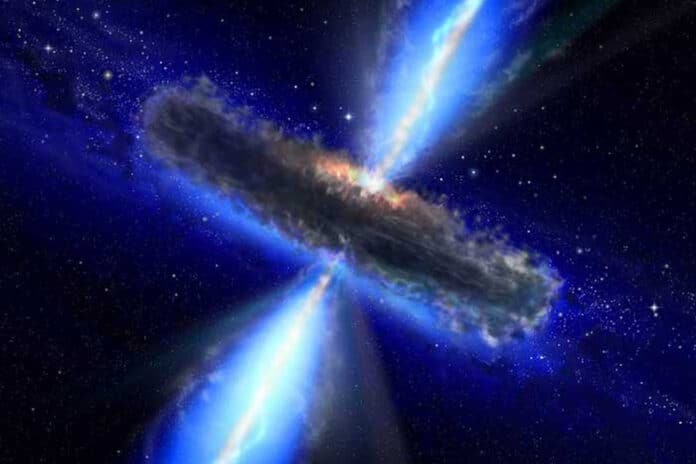A supermassive black hole is found in the center of every galaxy. Still, AGN are more spectacular events actively attracting gas and displaying a brilliance not found in normal black holes.
The JWST survey, which has a greater resolution than previous surveys using the Spitzer Space Telescope, was expected to find many more AGNs. However, despite MIRI’s increased strength and sensitivity, the current survey only discovered a small number of extra AGNs.
Active galactic nuclei, which are supermassive black holes quickly growing in size, were previously thought to be more common. However, a University of Kansas investigation of the cosmos using the James Webb Space Telescope has shown otherwise.
The Mid-Infrared Instrument (MIRI) results on the JWST indicate that our cosmos might be slightly more stable than previously thought. The study also discusses the difficulties in finding AGN and observations of faint galaxies and their characteristics.
For this study, scientists focused on a long-studied zone of the cosmos, the Extended Groth Strip, located between the Ursa Major and Boötes constellations. However, previous area examinations relied on a less powerful generation of space telescopes.
Allison Kirkpatrick, assistant professor of physics & astronomy at KU, said, “Our observations were taken last June and December, and we were aiming to characterize how galaxies looked during the heyday of star formation in the universe. This is a look back in time of 7 to 10 billion years in the past.”
“We used the mid-infrared instrument on the James Webb Space Telescope to look at dust in galaxies that existed 10 billion years in the past. That dust can hide ongoing star formation and growing supermassive black holes. So I carried out the first survey to search for these lurking, supermassive black holes at the centers of these galaxies.”
“The results looked completely different from what I had anticipated, leading to my first major surprise. One significant revelation was the scarcity of rapidly growing supermassive black holes. This finding prompted questions about the whereabouts of these objects. As it turns out, these black holes are likely growing at a slower pace than previously believed, which is intriguing, considering the galaxies I examined resemble our Milky Way from the past.”
“Earlier observations using Spitzer only allowed us to study the brightest and most massive galaxies with rapidly growing supermassive black holes, making them easy to detect.”
“An important mystery in astronomy lies in understanding how typical supermassive black holes, such as those found in galaxies like the Milky Way, grow and influence their host galaxy.”
“The study’s findings suggest that these black holes are not growing rapidly, absorbing limited material, and perhaps not significantly impacting their host galaxies. This discovery opens up a whole new perspective on black-hole growth since our current understanding is largely based on the most massive black holes in the biggest galaxies, which have significant effects on their hosts, but the smaller black holes in these galaxies likely do not.”
“Another surprising outcome was the lack of dust in these galaxies.”
“JWST can identify much smaller galaxies than ever before, including those the size of the Milky Way or even smaller, which was previously impossible at these redshifts (cosmic distances).”
“Typically, the most massive galaxies have abundant dust due to their rapid star formation rates. I had assumed that lower mass galaxies would also contain substantial dust, but they did not, defying my expectations and offering another intriguing discovery.”
“The work changes the understanding of how galaxies grow, particularly concerning the Milky Way.”
Journal Reference:
- Allison Kirkpatrick, Guang Yang, Aurelien Le Bail et al. CEERS Key Paper VII: JWST/MIRI Reveals a Faint Population of Galaxies at Cosmic Noon Unseen by Spitzer. The Astrophysical Journal. DOI: 10.48550/arXiv.2308.09750
